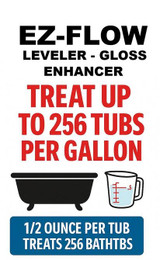Crosslink Bonding and coupling Agents Explained
Learn all about how crosslinking bonding agents and coupling agents work in this detailed blog. Crosslinking bonding agents create strong bonds between molecules, while coupling agents help improve the adhesion between different materials. We will explain the role of crosslinking bonding agents and coupling agents in various industries and applications. Discover the benefits of using these agents in your projects and how they can enhance the performance of your materials. Whether you are a professional in the field or just curious about these important chemicals, this blog will provide you with a comprehensive understanding of crosslinking bonding agents and coupling agents.
| Fri, Nov 3, 2023, 11:23 PM | |||
Explain crosslink in 2 part urethanes Crosslinking in 2-part urethanes refers to the chemical reaction that occurs between two components, commonly referred to as Part A and Part B, to form a strong and durable network of interconnected chains. This crosslinking reaction is essential for the curing or hardening of the urethane material. Part A of the urethane system typically consists of a polyol, which is a liquid or solid polymer with hydroxyl (OH) groups. Part B, on the other hand, contains a diisocyanate, which is a compound with two reactive isocyanate (NCO) groups. When these two components are mixed in the correct ratio, a chemical reaction known as polyurethane synthesis takes place. During this reaction, the isocyanate groups in Part B react with the hydroxyl groups in Part A, resulting in the formation of urethane linkages. This process is known as urethane crosslinking. The crosslinking reaction is typically catalyzed by a catalyst, such as a tin compound or amine, which helps facilitate the reaction between the isocyanate and hydroxyl groups. The crosslinking reaction is crucial for the final properties of the urethane material. It leads to the formation of a three-dimensional network of interconnected chains, which enhances the material's mechanical strength, chemical resistance, and overall durability. The degree of crosslinking can be controlled by adjusting the ratio of Part A to Part B, as well as the curing temperature and time. In summary, crosslinking in 2-part urethanes refers to the chemical reaction between the polyol and diisocyanate components, resulting in the formation of a strong and durable network of interconnected chains. This crosslinking reaction is essential for the curing and hardening of the urethane material, leading to improved mechanical and chemical properties. Can you use a type of weaving as analogy of crosslinking? Yes, we can use a type of weaving as an analogy to explain crosslinking in 2-part urethanes. Imagine two separate sets of threads or yarns representing Part A and Part B of the urethane system. When these two sets of threads are interwoven or intertwined, it creates a fabric with a strong and interconnected structure. Similarly, in the crosslinking process, the molecules of Part A and Part B react with each other, forming chemical bonds and creating a network of interconnected chains. This network is like a woven fabric, where the individual threads (molecules) are linked together, providing strength and stability to the material. Just as the weaving process creates a fabric with specific properties based on the type of threads and weaving pattern used, the crosslinking in urethanes determines the final properties of the material. The degree of crosslinking can be controlled to achieve desired characteristics such as flexibility, hardness, or chemical resistance. So, by visualizing the crosslinking process in 2-part urethanes as a weaving analogy, it becomes easier to understand how the interaction between the components leads to the formation of a strong and interconnected structure, like a woven fabric. So a silane coupling agent used on a surface as sort of a wipe on primer does not cause cross linking as but rather a whetting not cross linking correct? You are correct. A silane coupling agent used as a wipe-on primer on a surface does not directly cause crosslinking in the same way as the crosslinking reaction in 2-part urethanes. Instead, the primary function of a silane coupling agent is to enhance the adhesion between the surface and a subsequent coating or adhesive. When applied as a primer, the silane coupling agent acts as a wetting agent, which means it helps to improve the spreading and contact of the coating or adhesive on the surface. It achieves this by reducing the surface tension of the substrate, allowing the coating or adhesive to better adhere and bond to the surface. The silane coupling agent accomplishes this by forming chemical bonds with the surface through its functional groups, such as amino, epoxy, or vinyl groups. These functional groups have an affinity for certain substrates, such as glass, metal, or ceramics, and can chemically react with the surface to create a strong bond. However, it is important to note that while the silane coupling agent promotes adhesion, it does not typically cause crosslinking on its own. Crosslinking in this context refers to the chemical reaction between two components, resulting in the formation of a three-dimensional network. The silane coupling agent primarily serves as a surface treatment to enhance the adhesion of subsequent coatings or adhesives, rather than initiating a crosslinking reaction. |
Recent Posts
-
“Professional Refinishers: Are You Still Spraying Over Old Junk?
Understanding Common Coating Failures in the Bathtub Refinishing Industry And How to Determine …Apr 21st 2025 -
Melt Down vs. EZ Flow: What's the Difference?
Melt Down vs. EZ Flow: What's the Difference? Refinishers often ask us to explain the diffe …Apr 2nd 2025 -
Wait… Did You Just Say PAINT? “Bathtub Refinishing Pros Don’t Use Paint—Here’s Why”
Wait… Did You Just Say PAINT? “Bathtub Refinishing Pros Don’t Use Paint—Here’s Why” “Why Bathtub …Feb 16th 2025



